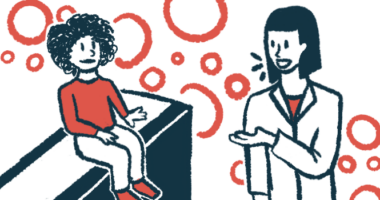ATS Releases Guidelines for Home Oxygen Therapy in Children with Sickle Cell Disease

The American Thoracic Society (ATS) released a set of new guidelines for home oxygen therapy for children with chronic health conditions that cause a reduction in blood oxygen levels, such as sickle cell disease.
Other conditions include cystic fibrosis, bronchopulmonary dysplasia, sleep disturbed breathing, pulmonary hypertension with and without congenital heart disease, and interstitial lung disease.
ATS’ recommendations, “Home Oxygen Therapy for Children. An Official American Thoracic Society Clinical Practice Guideline,” were recently published in its American Journal of Respiratory and Critical Care Medicine.
“Home oxygen is often needed for children with chronic lung and pulmonary vascular diseases,” lead study author Don Hayes Jr., MD, said in a press release.
“However, there is a striking lack of empirical evidence regarding its implementation, monitoring and discontinuation in children. These guidelines, developed by a panel of highly respected experts, offer an evidence-based approach to using home oxygen to benefit pediatric patients,” added Hayes, who is the medical director of the Advanced Lung Disease Program at Nationwide Children’s Hospital in Columbus, Ohio and co-chair of the working group organized by the ATS Assembly on Pediatrics.
Using data from systematic literature reviews, the panel, made up of 22 experts in pediatric and neonatal medicine, respiratory therapy, nursing, and population health, and parents, defined chronic hypoxemia (reduction in blood oxygen levels) as a state in which blood oxygenation is lower than 90% in children younger than a year old or 93% in children who are 1 year or older during 5% of the recording time, or in three independent measurements.
Then, using information from other studies and their own clinical experience, the panel developed a set of guidelines for each medical condition. The Grading of Recommendations, Assessment, Development and Evaluation (GRADE) system was used to rate the quality of evidence and strength of clinical guidelines.
Previous studies have suggested that oxygen therapy might be beneficial for children with sickle cell disease (SCD), since it not only increases blood oxygen levels, but also decreases the amount of abnormal red blood cells. However, it comes with a caveat: After stopping therapy, the amount of abnormal red blood cells might increase and even surpass initial levels, leading to a pain crisis in some patients.
“The panel acknowledged that the studies described above raise serious concerns about the potential for harm if oxygen is discontinued in patients with SCD. However, the panel had very low confidence in the findings owing to the studies’ small size (only seven patients total) and publication age (cointerventions were different in 1944 and 1984),” the members wrote.
“Moreover, the panel has collectively used oxygen in hundreds of patients with SCD for a variety of reasons without increases in sickle cell crises or acute chest syndrome upon discontinuation, and it was concerned about the untoward effects of allowing severe chronic hypoxemia to go unabated,” they added.
Based on this information, ATS suggests that, “for patients with sickle cell disease complicated by severe chronic hypoxemia, … home oxygen therapy [should] be prescribed.”
However, authors cautioned that this is a conditional recommendation, meaning that it may be the right course of action for most, but not all, patients.
Regarding home oxygen therapy discontinuation, the panel members took a conservative stance, arguing that weaning should happen gradually over the course of several weeks or months. In addition, after weaning, families should still have access to home oxygen therapy should the need arise. However, they also admitted these recommendations are based solely on personal experience and should be tested in future clinical trials.






